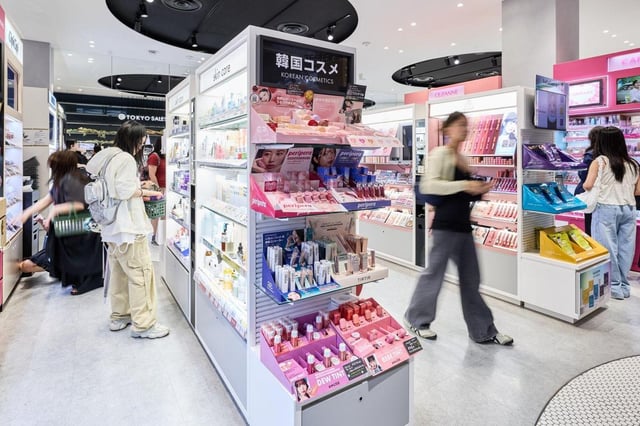By Kristina Vankova
In a notable shift on the global economic stage, South Korea has recently outpaced the United States in the cosmetics exports sector, signaling a significant achievement for the Asian nation and highlighting its burgeoning influence in the beauty industry. This development not only underscores South Korea鈥檚 innovative approach to beauty products but also serves as a testament to the rising popularity of Korean beauty, often referred to as K-beauty, worldwide.
The Rise of K-beauty
Over the past decade, K-beauty has transformed from a niche market into a global phenomenon. South Korean cosmetics are celebrated for their high quality, innovative ingredients, and attractive packaging, which have captivated consumers across various demographics and geographies. The emphasis on skincare routines and natural ingredients has set K-beauty products apart from traditional Western cosmetics, making them particularly appealing to a younger, more discerning audience.
South Korea鈥檚 success in the cosmetics industry is rooted in a culture that highly values skincare and beauty, propelling its innovations and influence far beyond national borders. This burgeoning interest has driven increased investment in research and development, allowing South Korean brands to push the envelope with cutting-edge formulations and unique products such as snail mucin creams and sheet masks.
Economic Impact and Global Reach
The economic implications of this shift are considerable. For South Korea, becoming a leader in cosmetics exports has provided a substantial boost to its economy. The nation鈥檚 strategic focus on the cosmetics sector, supported by government initiatives and partnerships with tech companies, has paved the way for this remarkable achievement.
The cosmetics industry in South Korea has become a crucial facet of its export economy, dovetailing with its high-tech industries to cement the country鈥檚 status as an economic powerhouse in Asia. Global markets have warmly received South Korean beauty products, with significant export gains seen in countries such as China and the United States, traditionally strongholds of local and international beauty brands.
Challenges and Future Prospects
Despite its rapid ascent, the South Korean cosmetics sector faces challenges that could impact its future trajectory. The highly competitive nature of the global beauty industry means that companies must continually innovate to maintain market share and consumer interest. Additionally, regulatory challenges and trade policies in various countries will pose ongoing hurdles to expansion.
However, South Korea鈥檚 commitment to innovation positions it well to address these challenges. Investments in technology, as well as strategic marketing initiatives, are likely to play significant roles in maintaining and expanding its influence worldwide. For example, leveraging the power of digital marketing and social media influencers could further bolster South Korea鈥檚 stake in the global market.
The prominence of South Korean cosmetics indicates a broader cultural and economic influence extending across different sectors. As K-beauty products continue to evolve and inspire industry trends, South Korea鈥檚 role on the world stage as a leader in innovation and beauty is poised to grow even further.
This newfound status as a leader in the cosmetics industry marks a pivotal moment for South Korea. As the country continues to evolve its offerings and adapt to market needs, its success could serve as a blueprint for other industries looking to make similar strides on the international stage. The future of cosmetics may very well be shaped by the trends and technologies emerging from South Korea, which has proven that it is not only a participant but a trailblazer in the beauty world.
